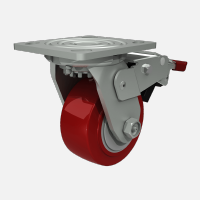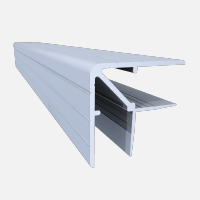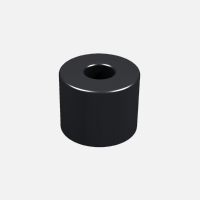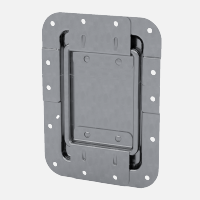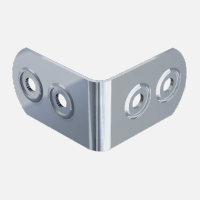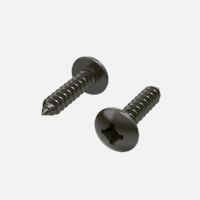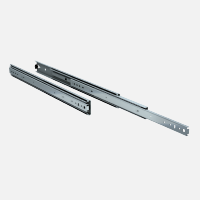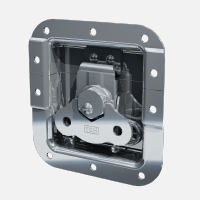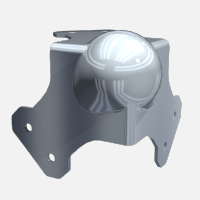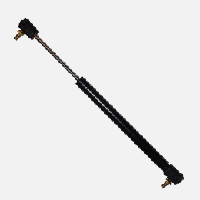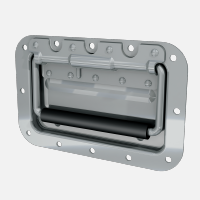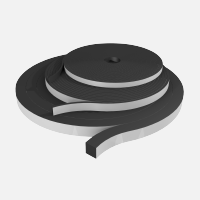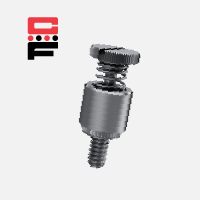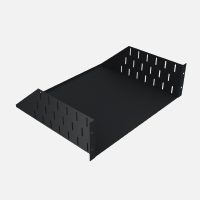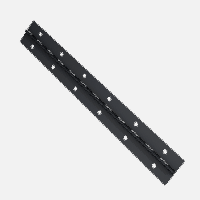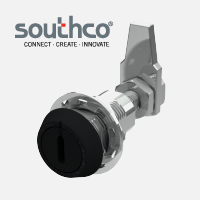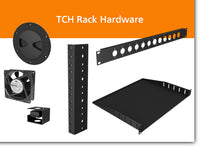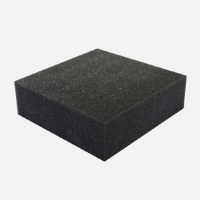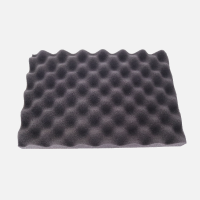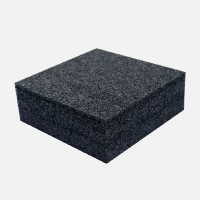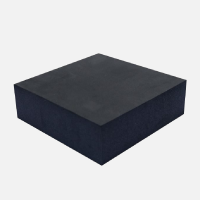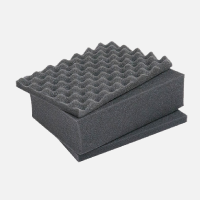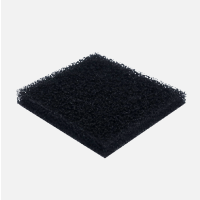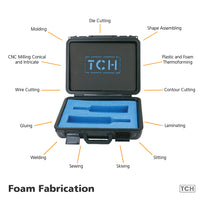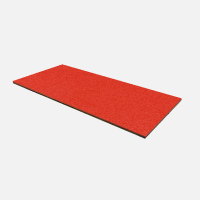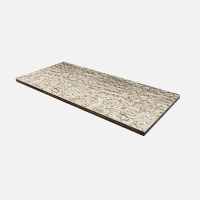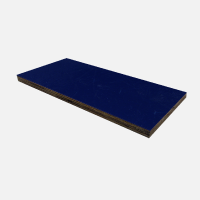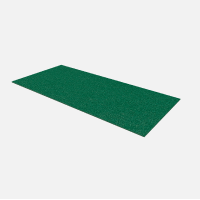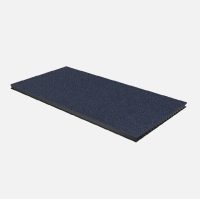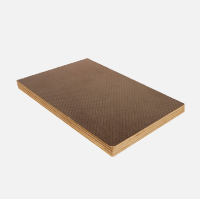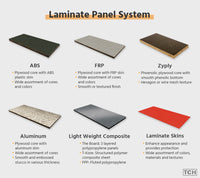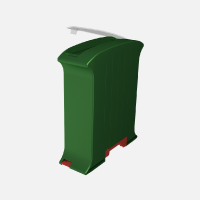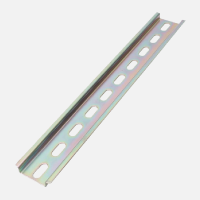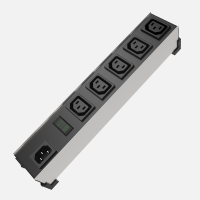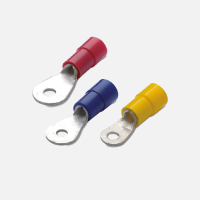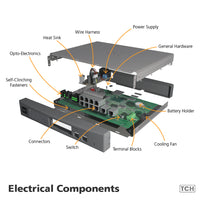Foam is used in a multitude of industries - some of which you would never think of. As foam fabricators we fulfill the needs of all our customers. Due to the variety and different uses they all require, we utilize an assortment of different foams and machinery. Keep reading to learn more about TCH's foam materials, capabilities and applications!
Materials
TCH is always ready to help! If you need assistance with your project or the material you're looking for isn't available online, contact us at info@tchweb.com or 800-465-6281.
Polyurethane Ether
Polyurethane foams are lightweight, resilient, low-odor, and have high resistance to mildew. Due to its larger cell structure, it allows for more airflow and moisture permeability. Due to its ability to provide protection, support, comfort, and safety, this foam is a popular choice for various applications.
Polyurethane Ester
An open-cell foam with excellent memory and very soft compression characteristics makes polyurethane foams very versatile. Features include lightweight, resilience, low odor, and high resistance to mildew. Polyester polyurethanes are more rigid and supportive than polyether due to their smaller cells. Because of this, polyester foams are great for protection and support.
Polyethylene Foam
Polyethylene is a closed-cell foam that's lightweight, resilient, flexible, and cost-effective. It's a popular choice for sporting goods and packaging electronics. The foam can also take repeated shocks, dampens vibration, and is resistant to chemicals and moisture. TCH also distributes Ethafoam®, which is the brand name of polyethylene foam from Sealed Air.
Crosslink Polyethylene (XLPE)
XLPE is a closed-cell foam that is highly versatile, flexible, compact, smooth, and possesses chemical and physical properties. It is ideal for packaging medical equipment and products due to its protection of Class A surfaces. Flotation devices also use crosslink foams because of its high buoyancy and low moisture permeability.
Convoluted Foam
Convoluted foam is foam converted into sheets with peaks and valleys, creating their "egg-crate" shape. Lightweight and flexible, this foam helps reduce the cushioning pressure when used as a lid insert and is also popular for sound insulation. TCH has polyether and polyester polyurethane available.
Reticulated/Acoustic Foam
Identified by its porous, open-cell structure look, reticulated foam is a low density and flexible polyether urethane foam. Benefits include compressibility, energy absorption, sound absorption, vibration dampening, mildew resistance, and low thermal conductivity.
Anti-Static
The anti-static properties of this foam are beneficial when packaging sensitive electronic parts and products. Anti-static foam provides controlled dissipation of electrostatic charges emitted from other neighboring materials during handling, assembly, and product shipment.
Conductive
Conductive foam is manufactured to process a high level of conductivity, making it a reliable way to minimize electrostatic discharge effects on static sensitive equipment while in transit. Electric currents pass through the cell structure away from devices.
Static Dissipating
If static sensitive protection is needed, but conductive foam's specific properties aren't, then static dissipative foam is a great choice. It offers a controlled transfer of static charges along with cushioning and permanent protection.
Fire Retardant
Fire retardant foams are chemically treated to be slow-burning or self-extinguishing when exposed to an open flame. Popular uses include construction foam boards, consumer goods, and radioactive materials (RAM) transportation packages.
Expanded Polypropylene (EPE)
Characteristics of EPE are excellent energy absorption, impact protection, thermal insulation, buoyancy, water and chemical resistance, and exceptionally high strength to weight ratio. This foam is also 100% recyclable.
Expanded Polyethylene (EPP)
EPE is a soft, lightweight, flexible, and non-abrasive foam that is highly resistant to water, oils, and chemicals. Its high weight to strength ratio and thermal resistance allows the foam to be heated, reused, and recycled multiple times.
Roll Stock
Foam roll stock is a versatile and dependable solution for many applications. TCH has various foam roll stock materials available that can be used for thermal insulation, acoustic barriers, packaging inserts, and more.
Capabilities
Converting and Slitting
Raw material stock gets converted to usable nominal size sheets from either rigid foam sheet stock or larger soft foam buns. Our Skiver is used to remove the outer hard skin layer and slit to split large size sheets. Our horizontal bun butter can accurately separate soft polyurethane and elastomeric foams and gasket.
Strip and Block Fabrication/Shape Assembling
We use an arsenal of dedicated foam bandsaws for quick and accurate cutting for simple geometric shape blocks. Able to handle large stock to cut precise dimensions or angles and bevels with our tilting saw.
Convoluting
Our custom-built convoluting horizontal saw converts soft foam stock into a sheet with peaks and valleys, creating its "egg-crate" shape. We can adjust the sheet's thickness to adapt the egg crate pattern to provide the appropriate cushioning as required.
Die Cutting
Die-cutting provides a fast, simple, and high-volume fabrication method to cut custom shapes from sheet stock. A wide variety of shapes can be achieved by adapting the die and the sheet stock's thickness. Using steel ruled tools (dies) and hydraulic clicker press, foam is compression cut by driving the steel rule through the foam sheet stock. Each type of material is matched with its unique rule edge to provide the best results.
CNC Waterjet Cutting/CNC Routing
Our 3-axis, high-speed CNC Router is a powerhouse machine for completing custom projects that require CNC Routing. It's a large bed machine that can accommodate most sheet materials and is highly efficient. It can easily create various cavities and pockets with the capability to cut foam horizontally and vertically.
The CNC Router has a seven-station tool changer and automatic measuring system. The tool changer keeps our setup and processing time to a minimum. Material is held in place without fixtures or framings with the 18 HP vacuum holding, while the 12 HP spindle helps reduce the tool paths and overall time.
Waterjet
A CNC machine is the most accurate method for foam fabrication. Our water-only machine has a three-axis multi-head that's great for individual projects or custom work without the cost of producing steel rule tooling.
It's excellent for cutting foams, gaskets, laminate, and solid wood with unlimited possibilities of shapes and profiles. A high-speed, thin water beam allows intricate parts to be cut with maximum sheet usage.
Skiving
Our Skiver can horizontally cut rigid foams (such as PE and XLPE) up to 67" wide and 8" high at any length. It's computer-controlled for accurate cutting with a high-powered motor capable of cutting very dense material.
Gluing and Assembly
We employ a wide variety of gluing and techniques; each adhesive is selected based upon material, bond, and how the part gets assembled. We use pressure-sensitive adhesives (PSA), hot melt glue, spray, roller and handgun application, heat welding for large surfaces, and hot air welding for smaller areas.
Laminating
Laminating is often used when there's a need to combine multiple materials. It usually merges foam with foam or foam with fabric. Common foam lamination techniques include the use of PSA, heat preparation, or kitting.
Plastic and Foam Thermoforming
There are a variety of plastic and foam-forming methods. Thermoforming is the process where the materials are heated until pliable, which then gets formed into the desired shape using a mold.
Applications
Sport and Leisure
Harder foams are used in cushioning and protection application (e.g. gym mats, barrier pads, etc.) whereas soft foams are used where comfort is needed (e.g. yoga). Mascots are also an interesting way to utilize foam due to their sculptural features, need for airflow, and visual openings.
Electronics and Industrial
Protective foam is used for transportation and shipping. Both are used as inserts into cases, containers and enclosures for structural support and as insulation and thermal protection. Hard shell cases with custom foam inserts are ideal for drones, inspection equipment, service and tool kits. Musical instruments and equipment definitely need protection when transporting in ATA cases.
Medical and Dental
Soft foams are used for orthopedic supports and braces with more flexible foams for physiotherapy equipment. Foams can also be used to protect equipment or hold tools.
Military and Firearms
Military requirements for foam cushioning must resist punishing abuse and rugged locations while maintaining performance. Military grade foams such as M-series Ethafoam are often used from approved suppliers. Mil-spec firearms cases, foam packaging and foam dunnage all require inserts.
Retail and Consumers
Foam inserts are used in this industry for packaging, display and protection. Some examples would be gift boxes, decorative awards, promotional packaging, etc.




